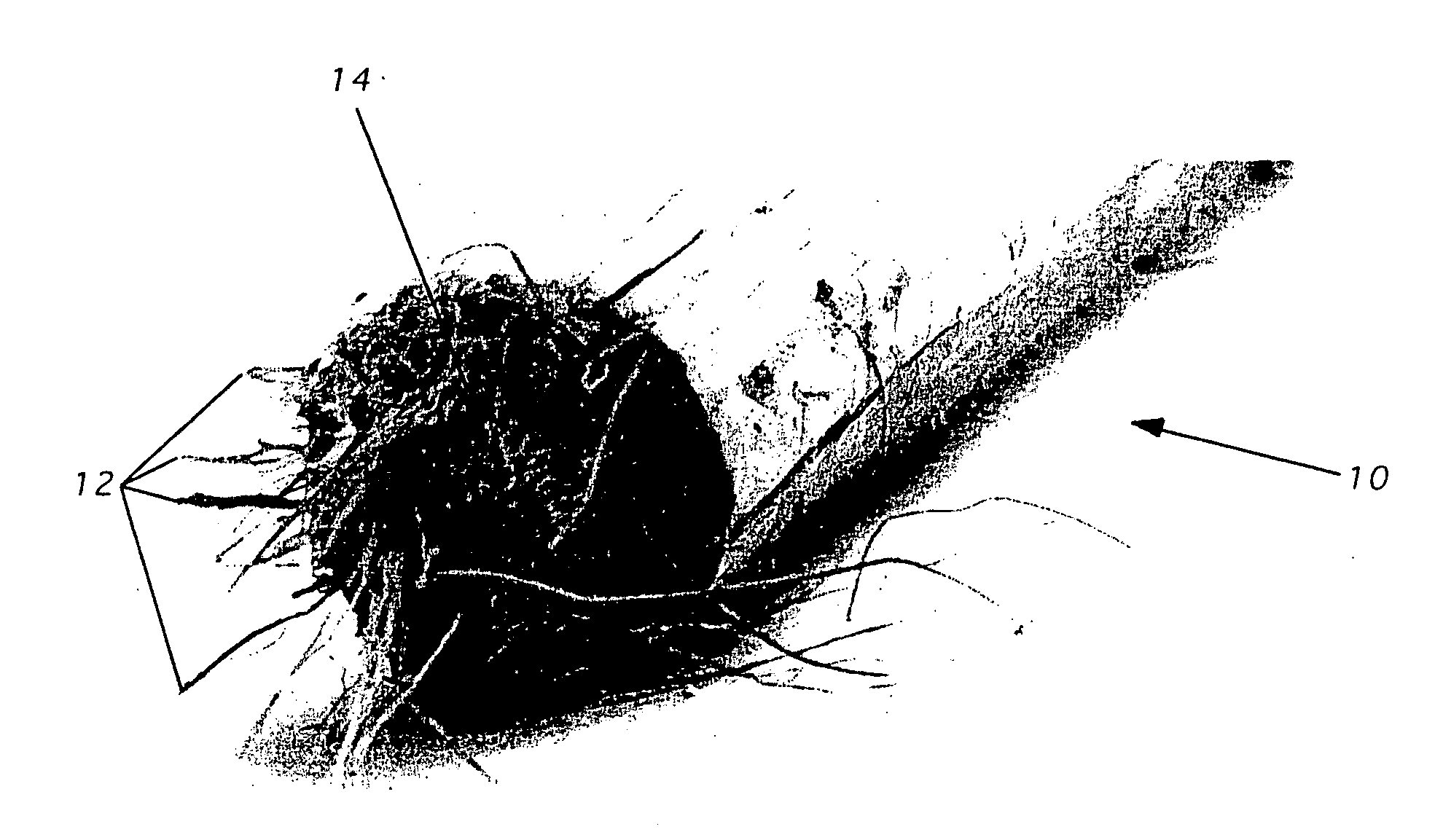Fibers comprising starch and polymers
- Summary
- Abstract
- Description
- Claims
- Application Information
AI Technical Summary
Problems solved by technology
Method used
Image
Examples
example 1
Fibers were produced by melt spinning a composition comprising 67 parts low density polyethylene, 19 parts StarDri 100 starch, 10 parts PCL and 4 parts glycerol. The blend is compounded by adding each ingredient concurrently to an extrusion system where they are mixed in progressively increasing temperatures. This procedure minimizes the thermal degradation to the starch that occurs when the starch is heated above 180° C. for significant periods of time. This procedure also allows the starch to be fully destructured before intimate mixing with the thermoplastic materials.
example 2
Fibers were produced by melt spinning a composition comprising 66 parts polypropylene, 20 parts StarDri 100, 9 parts PCL, and 5 parts glycerol.
example 3
The blend was compounded according to Example 1 with 10 parts Dow Primacor 59801, 70 parts StarDri 100, and 30 parts sorbitol. Acceptable spinning behavior was observed.
PUM
| Property | Measurement | Unit |
|---|---|---|
| Fraction | aaaaa | aaaaa |
| Fraction | aaaaa | aaaaa |
| Fraction | aaaaa | aaaaa |
Abstract
Description
Claims
Application Information
 Login to View More
Login to View More - R&D
- Intellectual Property
- Life Sciences
- Materials
- Tech Scout
- Unparalleled Data Quality
- Higher Quality Content
- 60% Fewer Hallucinations
Browse by: Latest US Patents, China's latest patents, Technical Efficacy Thesaurus, Application Domain, Technology Topic, Popular Technical Reports.
© 2025 PatSnap. All rights reserved.Legal|Privacy policy|Modern Slavery Act Transparency Statement|Sitemap|About US| Contact US: help@patsnap.com

